WEBSITE HIGHLIGHTS: JEWELERS TRICKS AND TRAPS
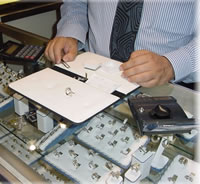 Jewelers Tricks and Traps is one of the most popular pages on our web site. As we hear stories from clients who have shopped for diamonds in jewelry stores or taken one of our diamonds to a jewelry store for their opinion, we update this page with tactics that are designed to benefit the jeweler and not the shopper.
Jewelers Tricks and Traps is one of the most popular pages on our web site. As we hear stories from clients who have shopped for diamonds in jewelry stores or taken one of our diamonds to a jewelry store for their opinion, we update this page with tactics that are designed to benefit the jeweler and not the shopper.
Words can not describe the anger jeweler stores have for the information now available online about diamonds and for companies like ours that are able to sell better quality diamonds for prices much lower than theirs. They remember the “good old days” when they could mark up diamonds 200%, 300% or more and the shopper had no alternatives so they paid those prices. Since most jewelry stores are not able or willing to reduce overhead (polished marble floors, fancy display cases, special lighting), they often resort to trying to sell lesser quality diamonds at inflated prices using the tricks and traps developed and practiced for generations.
While there are honest, hard working and experienced jewelers, it is the diamond shopper’s responsibility to have a basic knowledge of diamonds and be aware of the tricks they might encounter. This information will help sort out the good guys from those that would keep you from getting the best diamond possible at the best price.
Learn more about jewelers tricks and traps: Click Here
DIAMOND SHOPPER MISTAKES: BE HONEST WITH YOURSELF
Be honest with yourself concerning your true shopping requirements. There is not a month that goes by that we don’t hear back from a client who emails us saying they have purchased a diamond elsewhere. When we asked what they purchased they say they got a great deal on a diamond and just could not pass it up.
The story often goes like this: They will say they bought an EGL certified two carat diamond with I color and SI1 clarity that was much less expensive than the diamonds we had recommended. When we look in their file we see that the shopping requirements they provided us were for a GIA certified ideal cut diamond with at least G color and VS1 clarity, which is what we used as the basis for our recommendations.
They find a pretty diamond under the jewelry store lights and never think to let us know their true priorities. Fortunately most of our clients get into a dialogue with us so we can better understand their true priorities and thus help them find the best diamond in the country for them. Often this means they are discovering what factor impact the beauty of a diamond and which are simply numbers or letters on a certification. However, this takes courage on their part because they must first be honest with themselves.
You might wonder what I mean by being honest with themselves. The purchase of a diamond to be given as a gift, especially an engagement ring, is a complex emotional event. When you are truly in love with a person you often want to give more than you really can afford. You don’t want to be perceived as compromising in any way in “quality” because she deserves the very best, but your logic tells you that most of the expensive of higher “quality” will not be visible to the eye. The fear of rejection can distort all common sense so you feel the ring has to be just right or she might say no. When in doubt, men tend to carry research to the extreme and often forget why they are purchasing the diamond.
We have two excellent pages on our web site entitled For Guys Only and the other is For Gals Only. We encourage every diamond shopper to read both pages so they can make wise purchase decisions that promote happiness for years to come.
Read more in our For Guys Only section: Click Here
Read more in our For Gals Only section: Click Here
GIA IMPLEMENTS PLAN FOR DIAMOND CUT GRADING SYSTEM
 The Gemological Institute of America (GIA) will begin issuing new grading reports on January 1, 2006. For round brilliant cut diamonds in the GIA D-to-Z color range and Flawless-to-I3 clarity range, the new reports will include a Cut grade to accompany the Color, Clarity, and Carat Weight information that has been the core of the International Diamond Grading System™ developed by the Institute more than 50 years ago.
The Gemological Institute of America (GIA) will begin issuing new grading reports on January 1, 2006. For round brilliant cut diamonds in the GIA D-to-Z color range and Flawless-to-I3 clarity range, the new reports will include a Cut grade to accompany the Color, Clarity, and Carat Weight information that has been the core of the International Diamond Grading System™ developed by the Institute more than 50 years ago.
The GIA Laboratory has been collecting the necessary proportion information on most of the round brilliant diamonds it has graded since January 1, 2005. GIA will offer a free reissue service for reports on diamonds graded between August 1 and December 31, 2005, without requiring that the diamond be sent back to the GIA Laboratory. For round brilliant diamonds graded in 2005 prior to August 1, there will be a nominal fee to reissue the reports and only a small portion of these diamonds will need to be returned to the Laboratory for updated measurement information.
The addition of a cut grade to the highly respected GIA Diamond Grading Report and GIA Diamond Dossier® for round brilliant diamonds is the result of more than 15 years of intensive research and testing, including sophisticated computer modeling and ray tracing of more than 38.5 million proportion sets. Results from the computer modeling were validated by more than 70,000 observations of more than 2,300 diamonds by individuals from the trade and the public.
“Today we are proud to deliver to the industry, and the public, a truly comprehensive cut grading system for round brilliant diamonds. This system helps retailers better communicate the effects of cut on round brilliant diamonds and enables consumers to buy with even greater confidence. It also results in greater flexibility for manufacturers in obtaining the most value from their rough. The dedicated and skilled team that worked so hard to make this system possible embodies the spirit of GIA’s mission to serve the public trust in gems and jewelry,” says William E. Boyajian, President of GIA.
GIA considers the following seven components when assessing a cut grade: Brightness, fire, scintillation, weight ratio, durability, polish and symmetry. To get a sense of how the grade works, the GIA has developed the GIA Facetware Cut Estimator, online software that allows users to predict the cut grade of a round brilliant cut by entering its relevant parameters.
During the implementation period, there are two ways for individuals to estimate a GIA Cut Grade. First, they can enter the applicable parameters into the free online version of the GIA Facetware™ Cut Estimator, which can be found at www.diamondcut.gia.edu. Second, those with optical measuring devices such as Sarin or OGI can purchase from the manufacturer a version of their software with the GIA Facetware™ Cut Estimator Database embedded, with which they can quickly and automatically estimate cut grades for round brilliant diamonds, as well as gain advice on polishing from rough and recutting.
“We have worked very hard to develop a cut grading system that is both scientifically sound and practical to use. We want to make the transition to the new system as smooth as possible for individuals throughout the trade, which is why we decided to provide a substantial amount of lead time and all the tools necessary to learn about our cut grading system in advance of the new reports being issued,” says GIA Laboratory Chief Executive Officer Thomas C. Yonelunas.
At Diamond Source of Virginia, we will be updating our web pages discussing diamond cut with more information about the new GIA cut grading system as this industry change is implemented.
DIAMOND FACETS
The typical brilliant cut diamond is cut with 58 facets, 33 on the crown and 25 on the pavilion. On a well-proportioned stone, these facets will be uniform and symmetrical. If they are not, the diamond’s ability to refract and reflect light will suffer.
To predict a cut grade for a round brilliant cut diamond, GIA Facetware™ requires the input of the following proportions: total depth, table size, crown angle, pavilion angle, star length, lower-half (lower-girdle facet) length, girdle thickness, and culet size, as well as the diamond’s polish and symmetry grades.
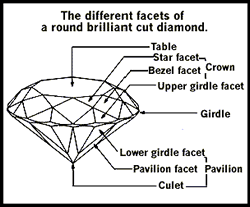 The crown angle, pavilion angle, star length and lower-half length are measurements historically not on GIA Diamond Grading Reports. These factors are going to get a lot more attention with the new GIA cut grading system.
The crown angle, pavilion angle, star length and lower-half length are measurements historically not on GIA Diamond Grading Reports. These factors are going to get a lot more attention with the new GIA cut grading system.
Although they are sometimes called the “minor” facets, the stars, related upper-half (upper girdle) facets, and lower-half (lower girdle) facets cover about half the surface of a round brilliant, and evidence indicates the importance of their influence on the overall appearance of a polished diamond.
The GIA concluded that if they neglect the light rays that reflect off the surface (as glare) or that pass through the diamond (as leakage), most light rays interact with the round brilliant diamond’s surface seven times or more, including at least one interaction with a “minor” facet. In terms of energy, about three-quarters of the light traced through a typical virtual diamond interacts with at least one of these minor facets.
All three of these minor facet groups play a strong role in pattern viewed from the top of a round brilliant. Changing the lengths of these facets alone, independent of the other proportions, will change the diamond’s overall appearance. The GIA research showed that metric calculations and human visual observations alike depend significantly on the stars, upper-half and lower-half parameters. In short, omitting these facets is like ignoring half the diamond.
INCLUSIONS & BLEMISHES: NEEDLE
Needles are long, thin crystal that look like a tiny rod at 10X magnification. A needle can appear white, bright, or dark. They appear as a streak of light inside the diamond. Many times some diamonds also have cluster of needles together.
Needles are an elongated included crystal that appears as a straight pin at 10x but in SI1 or higher clarity grades are seldom ever visible to the eye.
Learn more about inclusions and blemishes: Click Here
MOISSANITE
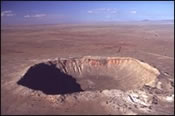 Moissanite is a mineral that was discovered in 1893 by Dr. Henri Moissan, a French scientist. The Nobel Prize-winner was the first to find tiny amounts of this natural silicon carbide within a meteorite. Moissanite has a hardness of 9.25 on the Mohs scale, compared to 10 for diamond, which is the earth’s hardest substance. It became obvious to those who saw it that moissanite would be popular in jewelry, but naturally occurring pieces of moissanite from meteorites are too small and scarce to make that possible.
Moissanite is a mineral that was discovered in 1893 by Dr. Henri Moissan, a French scientist. The Nobel Prize-winner was the first to find tiny amounts of this natural silicon carbide within a meteorite. Moissanite has a hardness of 9.25 on the Mohs scale, compared to 10 for diamond, which is the earth’s hardest substance. It became obvious to those who saw it that moissanite would be popular in jewelry, but naturally occurring pieces of moissanite from meteorites are too small and scarce to make that possible.
Synthetic moissanite can now be grown in labs and is probably the best manmade diamond imitation. Developed from material produced by Cree Research, C3 Inc. began to market it through selected retailers in mid-1998. In October 1999, C3 announced that they would change their business name to Charles & Colvard.
If properly oriented and well cut, moissanite strongly resembles diamond, due to its high refractive index and dispersion. As it has similar thermal conductivity to diamond, moissanite can pass as diamond on a standard diamond thermal tester, so the diamond industry also relies on a special instrument that measures relative transparency in the near-ultraviolet range (diamond absorbs and moissanite transmits light in these wavelengths).
Moissanite is most convincing as a diamond substitute in small sizes. Larger stones still show slight greenish or grayish tones that are difficult to eliminate. Careful examination through the crown facets (not through the table, since that’s oriented on the optic axis) under a loupe or microscope should easily reveal facet doubling caused by double refraction, as well as very non-diamond like surface polish and inclusions, so there is little excuse for misidentification if the tests are performed by a trained diamond expert.
Learn more about moissanite: Click Here
GEMSTONES: TOURMALINE
Tourmaline is the most varicolored of all gemstones. It occurs in all colors, but red, green, and multicolored are its most famous gem colors.
Tourmaline is found in Africa, Brazil, Madagascar, Mexico, Myanmar, Namibia, Sri Lanka and USA.
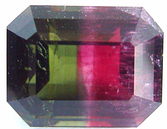 According to an ancient Egyptian legend this is the result of the fact that on the long way from the Earth’s heart up towards the sun, Tourmaline traveled along a rainbow. And on its way it collected all the colors of the rainbow. This is why nowadays it is called the “Rainbow gemstone”.
According to an ancient Egyptian legend this is the result of the fact that on the long way from the Earth’s heart up towards the sun, Tourmaline traveled along a rainbow. And on its way it collected all the colors of the rainbow. This is why nowadays it is called the “Rainbow gemstone”.
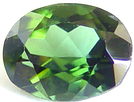 The name “Tourmaline” has been derived from the Singhalese expression “tura mali”, which translates as “stone of mixed colors.” The very name already refers to the unique spectrum of colors displayed by this gemstone, which is second to none in the realm of precious stones. Tourmalines are red and green, range from blue to yellow. Often they show two or more colors and are cherished for this parti- or multi-colored appearance. There are Tourmalines which change their color from daylight to artificial light, others display chattoyance or sheen, (the way it catches the light).
The name “Tourmaline” has been derived from the Singhalese expression “tura mali”, which translates as “stone of mixed colors.” The very name already refers to the unique spectrum of colors displayed by this gemstone, which is second to none in the realm of precious stones. Tourmalines are red and green, range from blue to yellow. Often they show two or more colors and are cherished for this parti- or multi-colored appearance. There are Tourmalines which change their color from daylight to artificial light, others display chattoyance or sheen, (the way it catches the light).
Scientifically, tourmaline is not a single mineral, but a group of minerals related in physical and chemical properties. The mineral elbaite is a member of the tourmaline group responsible for almost all the gem varieties. Three other members of the group — dravite, schorl, and liddicoatite, are seldom used as gems.
- Elbaite – green variety of tourmaline (may also refer to multicolored tourmaline)
- Rubellite – pink to red variety of tourmaline
- Indicolite or Indigolite – light to dark blue variety of tourmaline
- Dravite – brown variety of tourmaline
- Achroite – colorless variety of tourmaline
- Schorl – black variety of tourmaline
- Watermelon tourmaline – tourmaline with a red center, surrounded by a green layer (or vice versa)
- Verdelite – name rarely used to describe green tourmaline
- Siberite – purple variety of tourmaline
- Paraiba tourmaline – neon-blue variety of tourmaline
 Their rich and varied colors can captivate the eye. Even the black opaque tourmalines can shine nicely and produce sharp crystal forms. Tourmalines are cut as precious gems, carved into figurines, cut as cabochons, sliced into cross-sections and natural specimens are enthusiastically added to many a rock hound’s collection.
Their rich and varied colors can captivate the eye. Even the black opaque tourmalines can shine nicely and produce sharp crystal forms. Tourmalines are cut as precious gems, carved into figurines, cut as cabochons, sliced into cross-sections and natural specimens are enthusiastically added to many a rock hound’s collection.
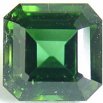 There are many unique properties of tourmalines. First, they are piezoelectric which means that when a crystal is heated or compressed (or vibrated) a different electrical charge will form at opposite ends of the crystal (an electrical potential). Conversely if an electrical potential is applied to the crystal, it will vibrate. Secondly they are pleochroic which means that the crystal will look darker in color when viewed down the long axis of the crystal than when viewed from the side. This property goes beyond the idea that the crystal is just thicker in that direction. Even equally dimensioned crystals will demonstrate this trait. This property can be used as an advantage by gem cutters who may wish to enhance a crystal’s pale color or weaken a strongly colored crystal.
There are many unique properties of tourmalines. First, they are piezoelectric which means that when a crystal is heated or compressed (or vibrated) a different electrical charge will form at opposite ends of the crystal (an electrical potential). Conversely if an electrical potential is applied to the crystal, it will vibrate. Secondly they are pleochroic which means that the crystal will look darker in color when viewed down the long axis of the crystal than when viewed from the side. This property goes beyond the idea that the crystal is just thicker in that direction. Even equally dimensioned crystals will demonstrate this trait. This property can be used as an advantage by gem cutters who may wish to enhance a crystal’s pale color or weaken a strongly colored crystal.
Tourmaline and opal are the birthstones of the month of October.
